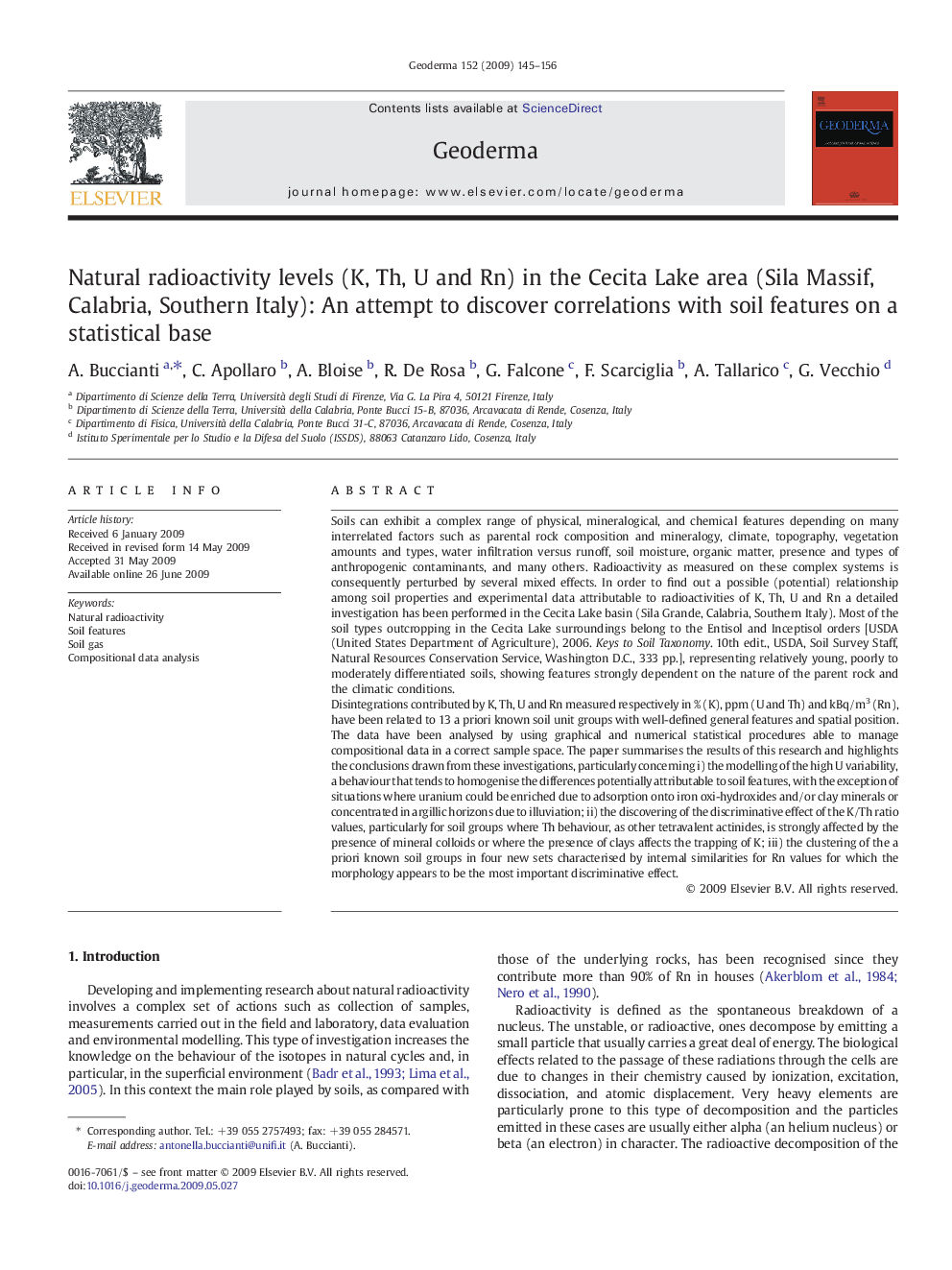| Article ID | Journal | Published Year | Pages | File Type |
|---|---|---|---|---|
| 4574618 | Geoderma | 2009 | 12 Pages |
Abstract
Disintegrations contributed by K, Th, U and Rn measured respectively in % (K), ppm (U and Th) and kBq/m3 (Rn), have been related to 13 a priori known soil unit groups with well-defined general features and spatial position. The data have been analysed by using graphical and numerical statistical procedures able to manage compositional data in a correct sample space. The paper summarises the results of this research and highlights the conclusions drawn from these investigations, particularly concerning i) the modelling of the high U variability, a behaviour that tends to homogenise the differences potentially attributable to soil features, with the exception of situations where uranium could be enriched due to adsorption onto iron oxi-hydroxides and/or clay minerals or concentrated in argillic horizons due to illuviation; ii) the discovering of the discriminative effect of the K/Th ratio values, particularly for soil groups where Th behaviour, as other tetravalent actinides, is strongly affected by the presence of mineral colloids or where the presence of clays affects the trapping of K; iii) the clustering of the a priori known soil groups in four new sets characterised by internal similarities for Rn values for which the morphology appears to be the most important discriminative effect.
Related Topics
Physical Sciences and Engineering
Earth and Planetary Sciences
Earth-Surface Processes
Authors
A. Buccianti, C. Apollaro, A. Bloise, R. De Rosa, G. Falcone, F. Scarciglia, A. Tallarico, G. Vecchio,
